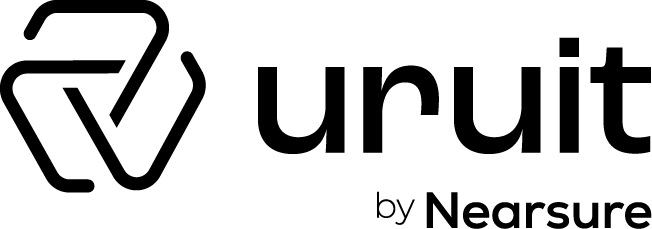Contents
Product-Led Onboarding for User-to-Customer Conversion
Do you remember the world of free samples? It was a common phenomenon in our pre-COVID universe, most notably in the U.S. at big box stores like COSTCO but also in small businesses and at your local farmers market where vendors doled out pieces of freshly baked bread or chocolate covered coffee beans.
This may seem like a fantasy land of complimentary goodies, or even germ spreader events in the current context, but free samples were effective at getting customers to try something new. But did those customers then buy the chocolate covered coffee beans?
Product-led onboarding doesn’t have to ask because it’s many steps ahead on the customer conversion journey. When executed successfully it helps companies save on the cost of free samples by not investing time or resources in users who were never going to be converts. Instead, it focuses data informed messaging and resources on those who are, and then achieves conversions by pursuing the best leads.
According to Reinvent Growth, product-led onboarding as a strategy “avoids random feature introduction to users and instead, it exploits historic data and considers users’ proficiency levels when exploring a product for the first time.”
Product-led onboarding is informed, strategic and effective in converting leads. It devotes time and talent into making sure the leads who are the right candidates for your product become lasting customers and simultaneously maximizes your team’s resources by focusing in an intentional way on the best leads.
How can product-led onboarding improve everyone’s experience?

Helping users envision their improvement
Laser focus on converting your best leads, dissect the when and why your fall-off moment happens and use the results to concentrate on users who are the best fit for your product and enhance their experience.
Maximizing teams through collaboration
Join forces here. Approach product-led onboarding strategically as a team made up of reps from across the company spectrum, with diverse backgrounds and expertise. Charge teams with being product-led driven and watch ideas flourish, team satisfaction increase and converts advance.
Achieving conversions
Design a customer journey based on data. Optimize the path by knowing who your best users are and what your most promising leads want before conversion. Analyze and understand the importance of timing and achieve conversions by being informed and anticipatory.
Creating and sustaining habitual users
This is all about the new feature NPI stage and the upsell, it is about remaining compatible and consistent with your best users while also elevating your offerings and deepening their connection with the product and company. All of these aims work together to identify what leads are sales ready. After identification you personalize the buyer experience, prioritizing engagement and enhancing the journey for your best leads.
Through successful product-led onboarding methods you not only improve your user experience, you also improve your team members’ morale by ensuring their time is well spent. How? Through effective collaborative strategies and not just hamster wheel tactics that don’t produce results and instead exhaust and discourage strong talent. Things move faster, smoother, more efficiently and more effectively. And you save on all of those wasted chocolate covered coffee beans.
Let’s break down each step:
Helping users envision their improvement
When you focus on converting and retaining your best users instead of all users, a shift happens in resources spent and results produced. You achieve this by analyzing when your fall-off moment happens with your best leads. This is a critical moment. Use the results generated out of that moment to focus on users who are the best fit for your product and enhance their experience. Users will be able to envision their place within the product and company sphere when their product-led onboarding experience is customized, tailored to their needs and maximizes connection.
Knowledge is power, the power to design and execute this user experience. The knowledge comes from the data gathered, your team’s expertise and your company commitment to onboarding personalization. Measure onboarding success by analyzing the monthly churn rate, key features adoption and NPS.
Hubspot, considered Herculean for their investment in and optimization of product-led onboarding practices, offers extensive product-led onboarding tactics including personalized welcome messages, walkthroughs, product tours and more. They constantly gather and analyze data and evolve their approach, using a blend of business, marketing and product metrics. When you use data effectively to engage your users, whether through emails, chat, or personalized guidance, you positively affect the product experience for all of your best leads and users.
Maximizing teams through collaboration: All hands-on deck
To improve user onboarding it’s best to have an inclusive and collaborative approach, where teams aren’t siloed or isolated, but instead work across the company on various stages of user onboarding. The size, make-up, ownership and scope will vary by company, but will likely include product managers, engineers, customer success and sales teams. These teams should not just be involved, they should be charged with being product-led driven.
By creating a coalition across departments whether a small team or a larger one, you can align the vision and find a common growth metric, ensuring all teams work in continuity on product-led onboarding.
Product managers typically envision, organize and mobilize the user onboarding experience from the first sign-up. Customer success teams understand user goals on a deeper level and when users falter in the onboarding process, they steer them back, proving product value and collecting and relaying valuable user feedback to the company. Sales teams ensure users are getting the most value out of the product, motivate users to return, and inspire them to anticipate future features.
Every team is important here, and they should work on product-led onboarding in a complimentary and cohesive way to produce the best results for all.
Achieving conversions: Quality over quantity
By directing your team to focus on the most promising leads, you are already winning on all kinds of levels, creating an environment of success and best practice where everyone knows their energy and ideas have been put to good use. But you’re going to win even more than your teams’ sense of satisfaction and a job well done by concentrating on the customer journey.
Designing a customer journey is a studied, data-driven, proactive endeavor. Its laser focused, optimizing conversion for those leads who are the right fit and ensuring they become customers. An optimal onboarding journey for these leads means using customer data to identify who your best users are, what they want and what they respond to, before conversion.
From there, it’s no longer a matter of who, it’s a matter of when. When to convert leads into customers. Too early and they’re not completely dependent, too late and they have already become accustomed to what they have. It’s a delicate balance, and time is of the essence. This is where you rely heavily on the customer data you’ve already accrued and the actions and trends of previous groups. With your sales and marketing teams, identify statistically significant touchstones.
You don’t necessarily need a large amount of data to make informed decisions (though it is certainly beneficial). You can really start at any point of success and go from there. Work back from that winning moment, compare and analyze likeness, and achieve conversions by being informed and anticipatory.
Creating and sustaining habitual users: In it for the long haul
You’ve invested a lot in this, in gathering and analyzing metrics, in involving teams across the company spectrum, and in implementing product-led onboarding tactics that were customized, data-driven, thoughtful and successful in ROI. This customer journey has brought you all here, past the point of conversion to the new feature NPI stage and the upsell. This is where you stay relevant, and the user remains engaged.
Because you focused your energy on your best leads and designed your customer journey for your best users you are now better prepared to answer questions about the next action and introduce the next product or feature.
By employing the same strategy that you have throughout this blog, a strategy informed by data and focused on self-serve user experience and product-led onboarding, you will continue to reap rewards in this post conversion stage by prioritizing your best users and maximizing your teams’ time and talent.
If you want to learn more about the subject, or you’re looking for tips to work on your own onboarding process, we crafted a guide to help you avoid the most common mistakes of this step… and you can download it for free right now!
To read about how Uruit improved the user experience and increased user loyalty of just under a million existing customers, focusing especially on the product’s onboarding, check out this case study.



